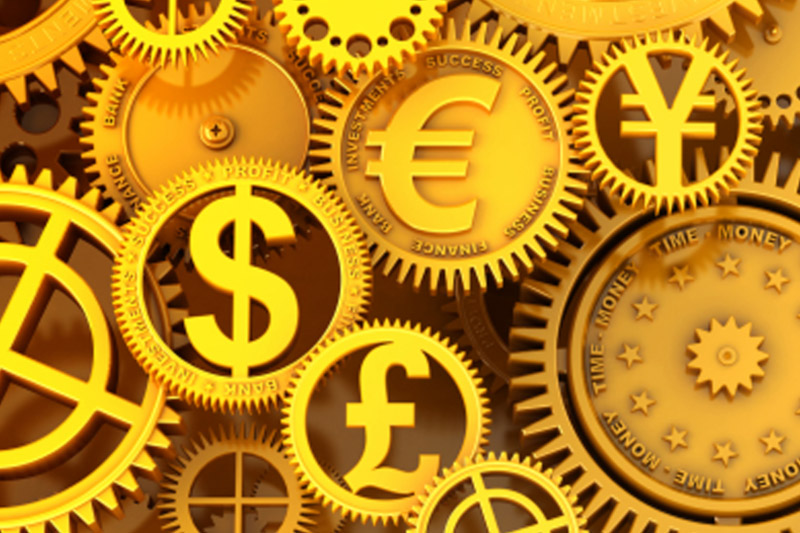Investing.com - The U.S. dollar erased gains against most of its major counterparts on Tuesday, as risk appetite was boosted by reports that a breakthrough on a second bailout for Greece could be imminent.
During U.S. morning trade, the dollar fell against the euro, with EUR/USD advancing 0.73% to hit 1.3224.
The euro was lifted by reports that Greek government officials were putting together the final draft of a bailout agreement ahead of meeting between Greek Prime Minister Lucas Papademos and coalition leaders later in the day.
Greece needs to reach a consensus on the terms of the bailout in order to secure a EUR130 billion rescue package and avert a default when a EUR14.5 billion bond repayment comes due on March 20.
The euro came under pressure earlier in the day, after official data showed that German industrial output dropped by 2.9% in December, disappointing expectations for a modest 0.1% decline.
The greenback was also lower against the pound, with GBP/USD rising 0.16% to hit 1.5846.
In the U.K., a report by the British Retail Consortium showed earlier that retail sales fell 0.3% on the year in January, after a 2.2% jump the previous month, as shoppers cut back on spending after heavy discounts boosted sales in the run up to Christmas.
The greenback remained higher against the yen but declined against the Swiss franc, with USD/JPY adding 0.41% to hit 76.86 and USD/CHF shedding 0.48% to hit 0.9142.
The acting head of the Swiss National Bank Thomas Jordan said earlier that the central bank’s exchange rate cap on the franc was the most effective tool it had to protect the Swiss economy against the risk of deflation and ease pressure on the country’s exporters.
Elsewhere, the greenback was weaker against its Canadian, Australian and New Zealand cousins, with USD/CAD dipping 0.06% to hit 0.9953, AUD/USD surging 0.84% to hit 1.0804 and NZD/USD easing up 0.13% to hit 0.8347.
The Aussie was boosted after the Reserve Bank of Australia unexpectedly left its benchmark interest rate unchanged at 4.5%, but the bank left the door open to further monetary easing if domestic demand weakened further.
Commenting on the decision, RBA Governor Glenn Stevens said “financial market sentiment, though remaining skittish, has generally improved since early December.”
The dollar index, which tracks the performance of the greenback versus a basket of six other major currencies, was down 0.37% to hit 78.89.
Elsewhere Tuesday, Federal Reserve Chairman Ben Bernanke was testifying on the economic outlook and federal budget situation before the Senate Budget Committee in Washington.
During U.S. morning trade, the dollar fell against the euro, with EUR/USD advancing 0.73% to hit 1.3224.
The euro was lifted by reports that Greek government officials were putting together the final draft of a bailout agreement ahead of meeting between Greek Prime Minister Lucas Papademos and coalition leaders later in the day.
Greece needs to reach a consensus on the terms of the bailout in order to secure a EUR130 billion rescue package and avert a default when a EUR14.5 billion bond repayment comes due on March 20.
The euro came under pressure earlier in the day, after official data showed that German industrial output dropped by 2.9% in December, disappointing expectations for a modest 0.1% decline.
The greenback was also lower against the pound, with GBP/USD rising 0.16% to hit 1.5846.
In the U.K., a report by the British Retail Consortium showed earlier that retail sales fell 0.3% on the year in January, after a 2.2% jump the previous month, as shoppers cut back on spending after heavy discounts boosted sales in the run up to Christmas.
The greenback remained higher against the yen but declined against the Swiss franc, with USD/JPY adding 0.41% to hit 76.86 and USD/CHF shedding 0.48% to hit 0.9142.
The acting head of the Swiss National Bank Thomas Jordan said earlier that the central bank’s exchange rate cap on the franc was the most effective tool it had to protect the Swiss economy against the risk of deflation and ease pressure on the country’s exporters.
Elsewhere, the greenback was weaker against its Canadian, Australian and New Zealand cousins, with USD/CAD dipping 0.06% to hit 0.9953, AUD/USD surging 0.84% to hit 1.0804 and NZD/USD easing up 0.13% to hit 0.8347.
The Aussie was boosted after the Reserve Bank of Australia unexpectedly left its benchmark interest rate unchanged at 4.5%, but the bank left the door open to further monetary easing if domestic demand weakened further.
Commenting on the decision, RBA Governor Glenn Stevens said “financial market sentiment, though remaining skittish, has generally improved since early December.”
The dollar index, which tracks the performance of the greenback versus a basket of six other major currencies, was down 0.37% to hit 78.89.
Elsewhere Tuesday, Federal Reserve Chairman Ben Bernanke was testifying on the economic outlook and federal budget situation before the Senate Budget Committee in Washington.
